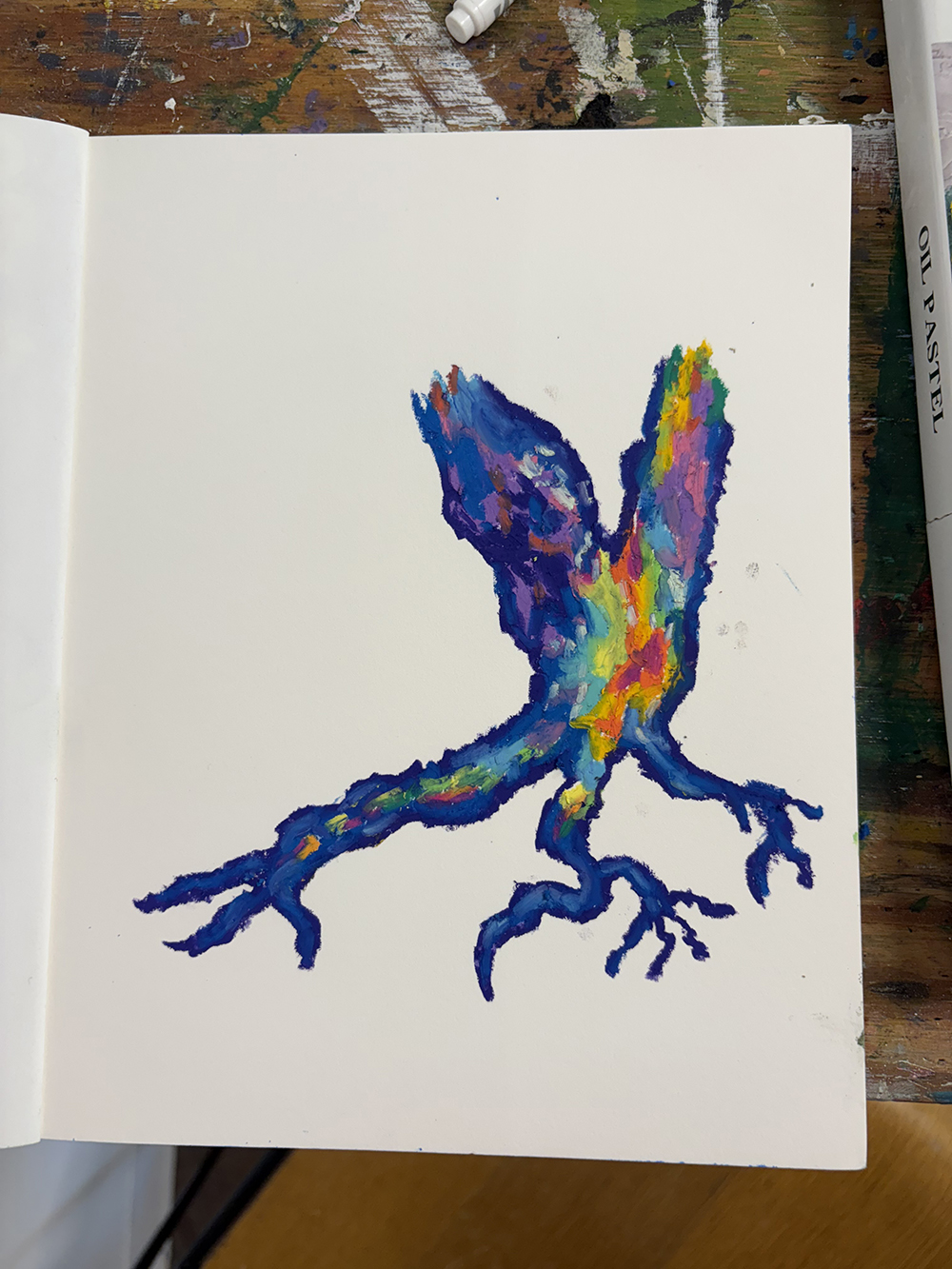MS 179I HM Nonhuman Media Art
What is it like to be a ___? Exploring nonhuman subjectivity
Miranda Brandt, Jensen Goldman, Joseph Grandchamp, Eric Grossman-Glover, Graham Hynes, Troy Kaufman, Arman Khasru, Antara Krishnan, Charlie Lambert, Ethan Lotan, Elle Marsyla, Alex Robertson, Theo Rode, Noa Scott, Maia Shama, Bam Sindhurattavej; Professor Rachel Mayeri
October 28-November 7, 2025
Sprague Gallery
Opening Reception: Thursday, October 30, 2025, 4-6 p.m.
Artist Presentations: October 28 and 30, 1:15-2:30 p.m.

Graham Hynes, Tree (Torojoatngna), 2025, oil pastel on paper, 9.5 x 7.5 inches
Sprague Gallery presents What is it like to be a ____? Exploring nonhuman subjectivity, a group exhibition organized by the students of the media studies course on Nonhuman Media Art (Fall 2025, HMC). The exhibition opens on Tuesday, October 28, with a reception on Thursday, October 30, 4–6 p.m. Artist presentations will be held on October 28 and 30, 1:15–2:30 p.m.
Come and appreciate the worlds of nonhuman plants, fungi, and animals through art!
Sensing, feeling, thinking, moving, deciding, playing, proprioception, awareness – there are big questions about how other species experience the world and themselves in space and time. So far we’ve read just a few texts to unpack the umwelt of other animals (Ed Yong’s An Immense World, Frans de Waal on Chimpanzee Politics, and Peter Godfrey-Smith and others on octopuses). Science can help us, but we need to rely on our “sympathetic imagination.” Art and science can help us consider our own species' blindness to the whole symphony of other species’ perceptions and carriers of significance. And this insight would simultaneously create a less anthropocentric view of the world!
Zoologist Jakob von Uexküll shared the idea of umwelt to describe the “environment-worlds” of different species in the early 20th century. He argued that human beings do not have privileged access to the objective space we run around in, but, like other animals, only possess senses afforded to them through evolution. His scientifically informed imagining of the worldviews of ticks and other animals was compared to absurdist art by the cultural critic Giorgio Agamben.
Reading Uexküll, students of Nonhuman Media Art were prompted to: “Create an artwork that expresses, interprets, appreciates and/or translates for others the organism’s perceptual world in relation to its body form, environment, and/or social interactants.”
The exhibition includes short videos, performance, a video game, sculpture, drawings, and paintings about the worlds of mushrooms, squirrels, pufferfish, trees, lizards, butterflies, yeast, crows, and sharks. We would be delighted if you attended—even more so in costume.
–Professor Rachel Mayeri, Harvey Mudd College Department of Humanities, Social Sciences, and the Arts
What is it like to be a ____? Exploring nonhuman subjectivity continues through November 7, 2025. Gallery hours are Monday through Friday, 8 a.m. to 5 p.m., with additional hours during events on evenings and weekends.